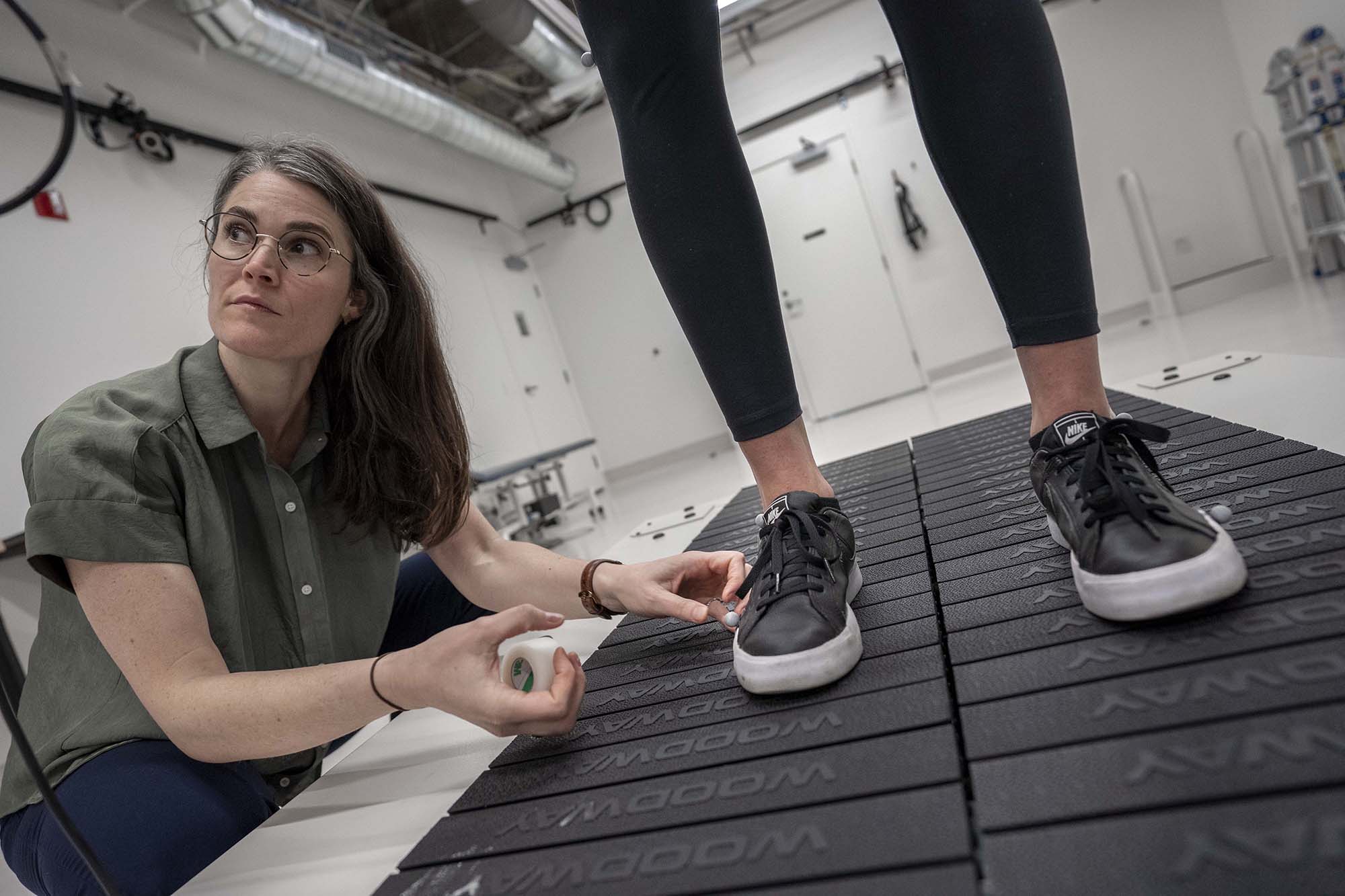04.20.2022
By uscbknpt
One Step at a Time

The Division’s new Gait Rehabilitation and Motor Learning Lab helps patients with neurologic injury get back on track.
BY MICHELLE MCCARTHY
WALKING: HOW MUCH THOUGHT DO YOU PUT INTO IT? It’s one of those things that “just happens,” yet is so essential to our lives. For most of us, it’s easy to take it for granted. But those who have experienced a neurologic injury are faced with the challenge of changing their gait and learning a different walking pattern. The newly opened Gait Rehabilitation and Motor Learning Lab at USC aims to enhance the recovery of independent walking in individuals with gait dysfunction.
“Walking is a really complex movement,” says Kristan Leech, lab director and assistant professor in the USC Division of Biokinesiology and Physical Therapy. “The challenge it presents is why I was interested in studying walking. Also, improving someone’s quality of life after they’ve had a neurologic injury felt like a really important problem to tackle.”
The overarching mission of the lab is to reduce disability in older adults with and without neurologic injury by addressing gait dysfunction. Leech plans to tackle that through experimental studies that look into short-term interventions; down the road, they will also study training interventions. “I’m really hoping to bridge the gap between research and clinical care at USC by involving clinicians in research, but also by having my research students become more aware of clinical issues to help facilitate bi-directional communication,” she explains.
Leech is excited about the opening of the Gait Rehabilitation and Motor Learning Lab and gives thanks to Associate Dean Jim Gordon, Associate Professor James Finley, and graduate students Sarah Kettlety and Morgan Kelly for their hard work and assistance in bringing it to fruition.
The lab’s first study will explore the impact of post-stroke, cognitive impairment on motor learning and people who have experienced strokes, funded by the National Institutes of Health.
“I got interested in doing research while I was a physical therapy student,” Leech shares. “I started working in a research lab that was studying stroke and spinal cord injury rehabilitation. Through that experience, I realized that was the type of environment in which my brain came alive, where people were asking critical questions about how our patient care worked, why it worked and how we could we make it better. I could see how I could move the field forward and affect more patients than I could just as a clinician practicing myself.”
As Leech looks to the future, she ponders how success would take form, and once again, it’s all about making life better for patients in need. “It’d be great if clinicians find something I do in the lab so useful that they start implementing it or taking it up and having it inform their practice,” she says. “So at some point in the future, if someone emails me and says, ‘Hey, this paper you wrote, or this project you did in your lab really changed the way I think about how I provide therapy to my patients,’ … that would be what success means to me.”
PHOTO: CHRIS SHINN

